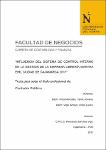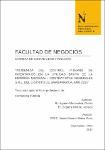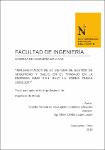Mostrar el registro sencillo del ítem
PID control and estimation of the attitude model applied to geostationary satellites
| dc.contributor.author | Grados, Juan | |
| dc.contributor.author | Auccahuasi, Wilver | |
| dc.contributor.author | Herrera, Lucas | |
| dc.contributor.author | Cuba, César | |
| dc.contributor.author | Meza, Jessica | |
| dc.contributor.author | Rubiños, Santiago | |
| dc.contributor.author | Grados, Herbert | |
| dc.contributor.author | Fuentes, Alfonso | |
| dc.contributor.author | Rojas, Karin | |
| dc.date.accessioned | 2023-10-19T17:06:33Z | |
| dc.date.available | 2023-10-19T17:06:33Z | |
| dc.date.issued | 2023-04-04 | |
| dc.identifier.citation | Grados, J., Auccahuasi, W., Herrera, L., Cuba, C., Meza, J., Rubiños, S., Grados, H., Fuentes, A., & Rojas, K. (2023). PID control and estimation of the attitude model applied to geostationary satellites. AIP Conference Proceedings, 2725(1), 030004. https://doi.org/10.1063/5.0125493 | es_PE |
| dc.identifier.other | . | es_PE |
| dc.identifier.uri | https://hdl.handle.net/11537/34656 | |
| dc.description | El texto completo de este trabajo no está disponible en el Repositorio Académico UPN por restricciones de la casa editorial donde ha sido publicado. | es_PE |
| dc.description.abstract | The estimation of Systems is based on the analysis of data obtained after experimenting about the behavior of a real process in response to an external disturbance in order to find a scheme that allows the mathematical stages to be modeled. This is the importance of its in-depth study, since if it is carried out correctly, re-directing resources to other fields is one of the many benefits of its application. This PhD thesis seeks to highlight the importance of correcting the displacements that satellites in orbit may experience, due to the influence of various agents, both of their own functioning and those generated by the environment in which they operate, that is why the technique of Systems estimation should be presented as a very useful option thanks to the analysis tools of the MATLAB program. The putting in orbit of a team of these characteristics implies investment of strong amounts of time, money and technology; likewise maintain its initial orientation leads to the analysis of new parameters, without mentioning the great problem generated in the orbit of the Earth, if for reasons other than those considered "normal", this orientation varied and the implemented processes did not fulfill their function. The necessary driver for our project is a PID Control since a control law can compensate with the integral and derivative actions. The necessary tool for the development of our controller is from MATLAB. With this tool we can reach our goal, since it shows us the trajectory of the roots, as well as the necessary graphs showing control characteristics such as the maximum overshoot, stabilization time, and percentage of system error, among others. | es_PE |
| dc.format | application/pdf | es_PE |
| dc.language.iso | eng | es_PE |
| dc.publisher | American Institute of Physics | es_PE |
| dc.rights | info:eu-repo/semantics/closedAccess | es_PE |
| dc.source | Universidad Privada del Norte | es_PE |
| dc.source | Repositorio Institucional - UPN | es_PE |
| dc.subject | Geodesy | es_PE |
| dc.subject | MATLAB | es_PE |
| dc.subject | Space instruments | es_PE |
| dc.subject | Geostationary satellites | es_PE |
| dc.title | PID control and estimation of the attitude model applied to geostationary satellites | es_PE |
| dc.type | info:eu-repo/semantics/conferenceObject | es_PE |
| dc.publisher.country | PE | es_PE |
| dc.identifier.journal | AIP Conference Proceedings | es_PE |
| dc.description.peer-review | Revisión por pares | es_PE |
| dc.subject.ocde | https://purl.org/pe-repo/ocde/ford#2.02.04 | es_PE |
| dc.description.sede | Chorrillos | es_PE |
| dc.identifier.doi | https://doi.org/10.1063/5.0125493 |
Ficheros en el ítem
| Ficheros | Tamaño | Formato | Ver |
|---|---|---|---|
|
No hay ficheros asociados a este ítem. |
|||




